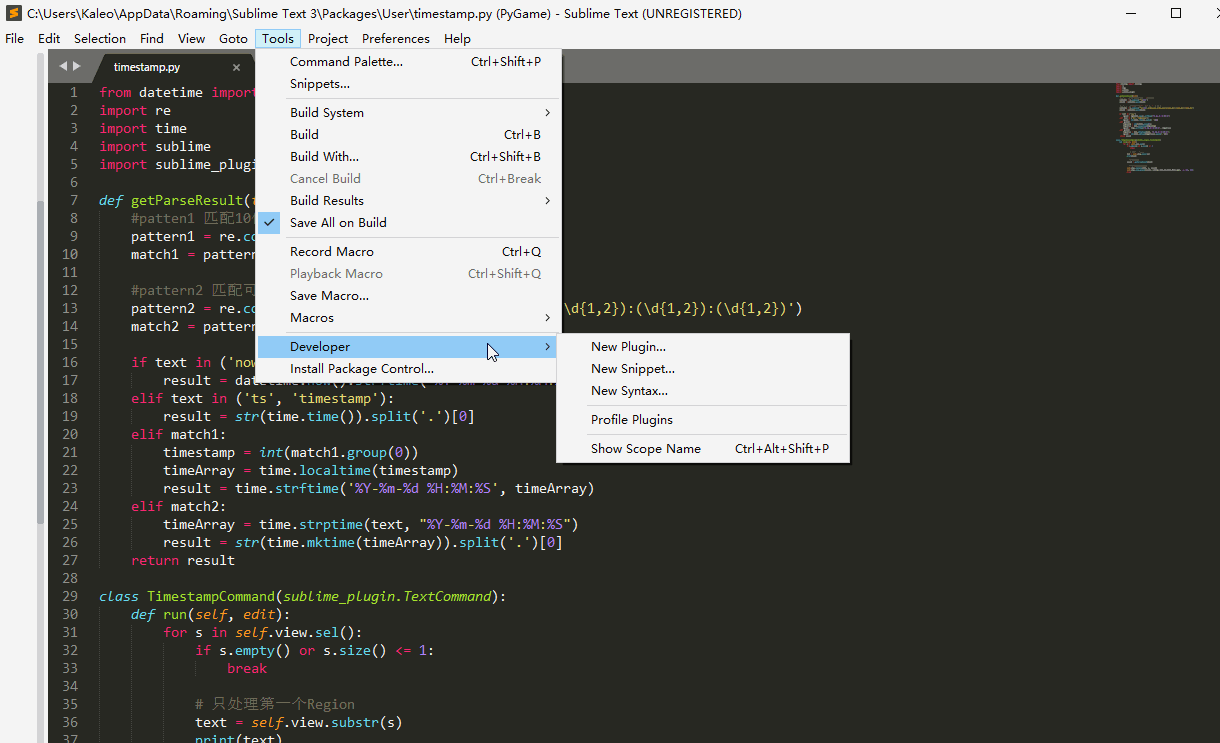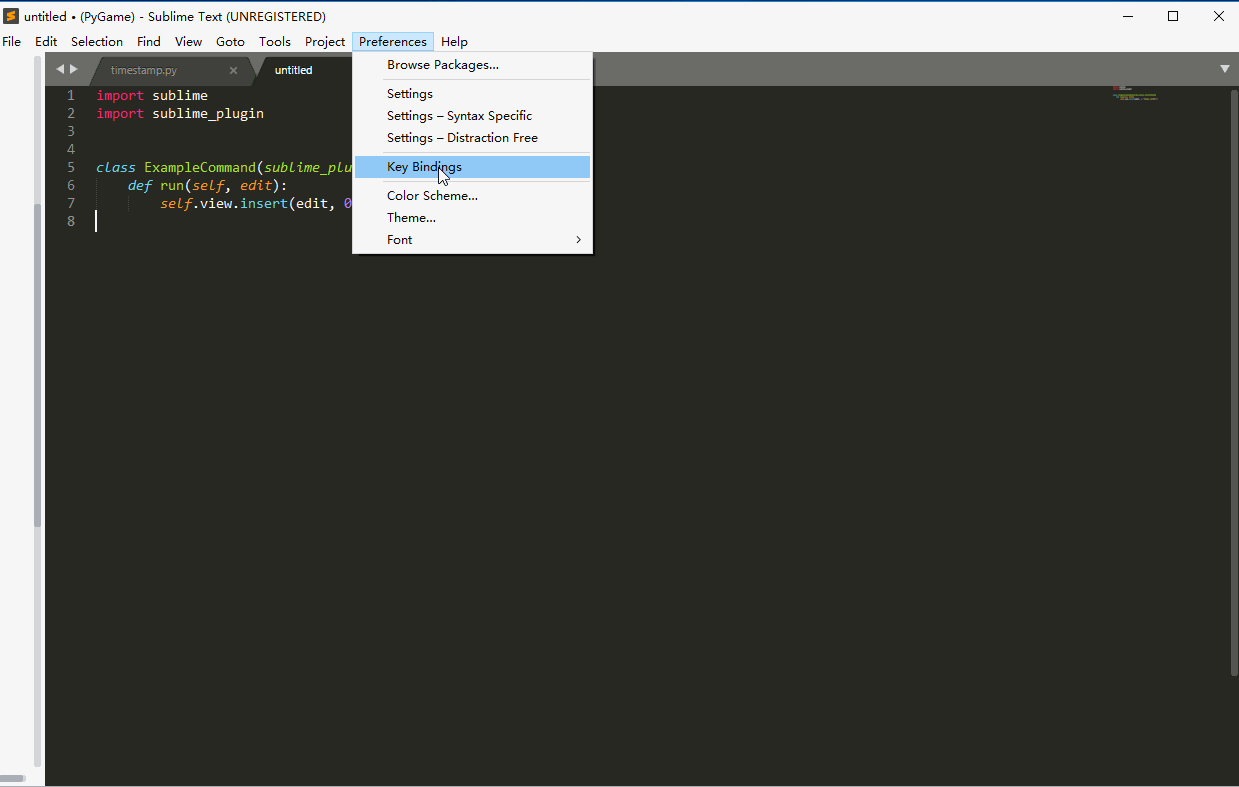平常配置表中,经常需要用到时间配置,比如活动开始结束。从可读性上,我们喜欢2017-04-27 17:00:00,从程序角度,我们喜欢用1493283600。前者是包含时区概念的,而后者时区无关,所以一般推荐直接使用数字时间戳格式来配置。
实际配置时,之前一直用MySQL的FROM_UNIXTIME()和UNIX_TIMESTAMP函数,或者使用网页工具进行时间戳查看转换,十分繁琐。
做得多了,就想到为什么不写个插件,直接在编辑器里查看转换好了。参考了网络上的一些示例并查阅了Sublime的相关API,过程如下。
1.依次执行Tools -> Developer -> New Plugin,新建一个插件脚本,命名为timestamp.py

2.添加脚本代码,具体可以看注释:
from datetime import datetime
import re
import time
import sublime
import sublime_plugin
def getParseResult(text):
#patten1 匹配10位整数时间戳(1493283600)
pattern1 = re.compile('^d{10}')
match1 = pattern1.match(text)
#pattern2 匹配可读时间格式(2017-04-27 17:00:00)
pattern2 = re.compile('^(d{4})-(d{1,2})-(d{1,2})s(d{1,2}):(d{1,2}):(d{1,2})')
match2 = pattern2.match(text)
if text in ('now'):
result = datetime.now().strftime('%Y-%m-%d %H:%M:%S')
elif text in ('ts', 'timestamp'):
result = str(time.time()).split('.')[0]
elif match1:
timestamp = int(match1.group(0))
timeArray = time.localtime(timestamp)
result = time.strftime('%Y-%m-%d %H:%M:%S', timeArray)
elif match2:
timeArray = time.strptime(text, "%Y-%m-%d %H:%M:%S")
result = str(time.mktime(timeArray)).split('.')[0]
return result
class TimestampCommand(sublime_plugin.TextCommand):
def run(self, edit):
for s in self.view.sel():
if s.empty() or s.size() <= 1:
break
# 只处理第一个Region
text = self.view.substr(s)
print(text)
# 得到转换结果
result = getParseResult(text)
# 进行文本替换并弹窗显示
self.view.replace(edit, s, result)
self.view.show_popup(result, sublime.HIDE_ON_MOUSE_MOVE_AWAY, -1, 600, 600)
break
3.进行快捷键绑定,依次执行Preferences -> Key Bindings,添加代码{ "keys": ["ctrl+t"], "command": "timestamp"}

很简单,一个方便查看转换时间戳的插件就写好了。选中文本,按快捷键CTRL+t,效果图:
